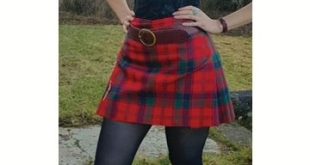The hijab is often associated with modesty and cultural identity, but many people don’t realize its practical benefits—especially when it comes to weather protection. Whether in scorching heat or chilly winds, the hijab can serve as a shield against harsh environmental conditions. But how does hijab help with the weather exactly? The answer lies in its ability to regulate body temperature, provide sun protection, and act as a barrier against dust and cold air.
For centuries, people living in extreme climates have used head coverings to protect themselves from the elements. Similarly, the hijab helps with the weather by offering comfort and adaptability to different conditions. Whether it’s the summer heat or winter chill, the fabric and style of the hijab can make a significant difference in staying comfortable throughout the day.
Key Takeaways
- The hijab protects from UV rays and prevents sunburn.
- Thick hijabs provide warmth in winter by trapping heat.
- A hijab shields against dust, pollution, and allergens.
- Breathable fabrics keep the head cool in humid conditions.
- Water-resistant hijabs offer protection in rainy weather.

How Does Hijab Help with Weather Conditions?
1. Protection from the Sun in Hot Weather
One of the most notable benefits of wearing a hijab in summer is its ability to protect from the sun’s harmful rays.
- UV Protection: A hijab acts as a natural barrier against direct sun exposure, reducing the risk of sunburn and skin damage.
- Temperature Regulation: Light-colored, breathable hijabs reflect sunlight, keeping the head and neck cool.
- Sweat Absorption: Cotton and linen hijabs absorb sweat, preventing discomfort and overheating.
- Prevention of Sunstroke: Covering the head reduces the risk of sunstroke by preventing excessive heat absorption.
2. Insulation Against Cold Weather
When temperatures drop, a hijab provides an extra layer of warmth to keep the body insulated.
- Heat Retention: Thick fabrics like wool or pashmina trap heat, preventing the cold from penetrating.
- Wind Protection: The hijab acts as a shield against chilly winds, reducing the risk of earaches or throat infections.
- Layering Benefits: A hijab can be wrapped around the neck as a scarf, offering additional warmth.
- Moisture Resistance: Certain hijab materials help retain moisture, preventing dry skin caused by cold air.
3. Shield Against Dust and Pollution
Apart from temperature control, the hijab serves as a protective layer against dust, dirt, and air pollution.
- Filtering Dust: In windy environments, a hijab prevents dust and sand from entering the hair and face.
- Reducing Allergies: Those with allergies benefit from the hijab acting as a shield against airborne particles.
- Minimizing Hair Damage: Pollution and UV rays can cause hair damage; covering it keeps hair healthy and protected.
4. Adaptability in Humid Conditions
Humidity can make the weather feel warmer than it actually is, but a hijab can help manage this discomfort.
- Breathable Fabrics: Lightweight materials like chiffon and georgette allow air circulation, reducing sweat buildup.
- Moisture-Wicking Properties: Some hijabs absorb sweat while allowing quick evaporation, keeping the wearer cool.
- Preventing Frizz: Humidity can make hair frizzy, but a hijab helps maintain a neat and polished look.
5. Comfort in Rainy Weather
Wearing a hijab in the rain can be beneficial by providing extra protection from getting drenched.
- Water-Resistant Fabrics: Some hijabs are made from materials that repel water, keeping the head dry.
- Added Layer of Warmth: A hijab helps maintain body warmth when exposed to cold rain.
- Protecting Hair from Damage: Rainwater can make hair frizzy and unmanageable, but a hijab prevents direct exposure.
Choosing the Right Hijab for Different Weather Conditions:
Hot Weather:
- Lightweight fabrics like cotton, chiffon, and linen
- Light colors to reflect sunlight
- Loose-fitting styles for air circulation
Cold Weather:
- Thick fabrics like wool, pashmina, and fleece
- Dark colors to absorb heat
- Layered wrapping styles for insulation
Windy and Dusty Conditions:
- Snugly wrapped styles to prevent dust from entering
- Tightly woven fabrics like jersey or polyester
Rainy and Humid Weather:
- Water-resistant fabrics like silk blends
- Breathable hijabs to prevent overheating
Conclusion
So, how does hijab help with the weather? It serves as a versatile accessory that adapts to different climates, providing sun protection in hot weather, insulation in the cold, and a shield against wind, dust, and pollution. By choosing the right fabric and style, a hijab can enhance comfort in any season, making it a practical and beneficial garment beyond its cultural and religious significance.
FAQs
1. Does wearing a hijab make you hotter in the summer?
Not necessarily! A hijab made from breathable fabric, such as cotton or linen, can actually keep you cooler by protecting your skin from direct sunlight.
2. Can hijabs protect against strong winds and dust?
Yes, a hijab provides excellent protection against dust and wind, preventing particles from entering the hair and face.
3. What type of hijab is best for winter?
Wool, fleece, or pashmina hijabs are great choices for winter as they provide warmth and insulation against the cold.
4. Do hijabs help with humidity?
Yes, lightweight and breathable hijabs like chiffon or georgette allow air circulation, preventing excessive sweating in humid conditions.
5. Is there a specific hijab fabric for rainy weather?
Silk blends and water-resistant fabrics work well in rainy weather, helping to keep the head dry and comfortable.
Wearing a hijab is not just about modesty—it’s also a smart way to protect yourself from changing weather conditions. Whether it’s summer, winter, or a rainy day, the right hijab can make all the difference in staying comfortable throughout the year.
Read More:
How Does Hippie Clothing Help with the Weather?



